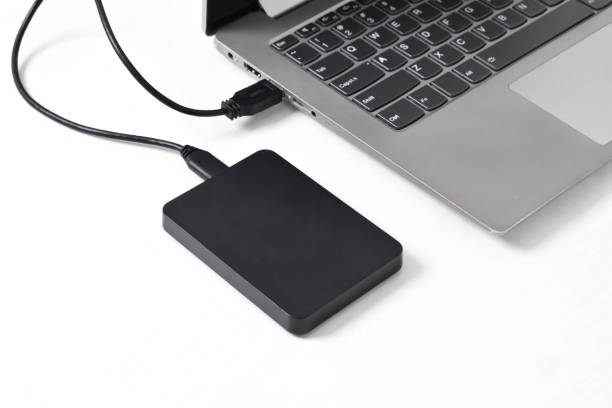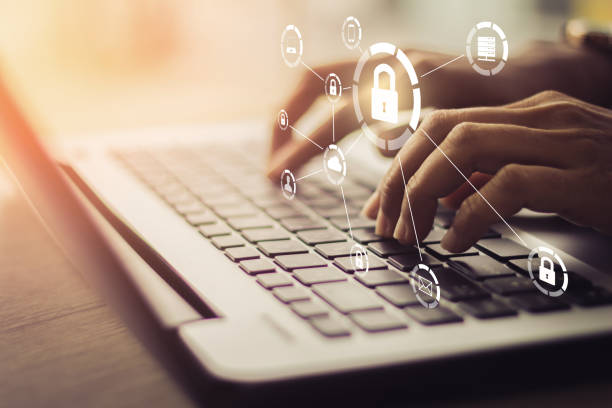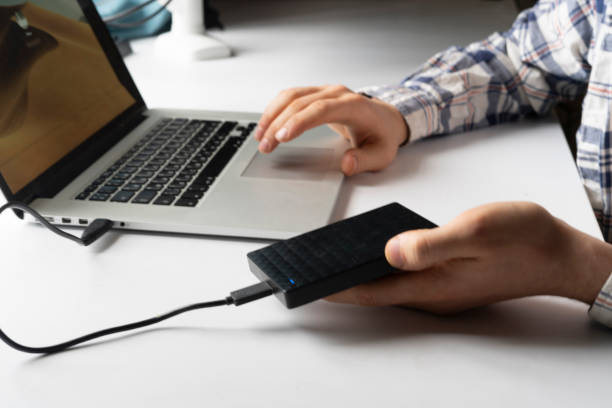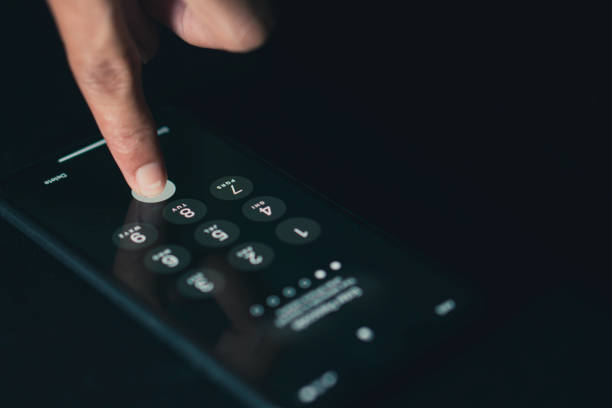Effortlessly master the art of backing up your Dropbox to an external drive with our straightforward guide. Dive into the essentials of preparation, execution, and automation to protect your files with confidence and ease.
Understanding the Need for External Backups
Backing up your data is essential for ensuring the security and accessibility of your files in case of unforeseen circumstances. Dropbox, as a popular cloud storage service, provides robust storage solutions, but additional precautions can enhance data redundancy and peace of mind. This section explores the importance of learning how to backup Dropbox to an external drive.
Importance of External Backups
Ensuring data security and accessibility is paramount in today’s digital landscape. External backups provide an additional layer of protection against data loss due to various unforeseen circumstances. Whether it’s accidental deletion, hardware failure, or cyber-attacks, having backups outside of your primary storage solution is crucial for maintaining business continuity and peace of mind.
- Data Redundancy: External backups ensure that your data is stored in multiple locations, reducing the risk of complete data loss.
- Risk Management: Protects against disruptions such as cloud service outages or network failures.
- Compliance: Helps organizations meet regulatory requirements by maintaining copies of data in different formats or locations.
Why Backup Dropbox to an External Drive?
Backing up Dropbox to an external drive enhances your data management strategy by providing additional layers of security and accessibility. While Dropbox offers reliable cloud storage, external backups offer physical control over your data and ensure access even during internet outages or service disruptions.
- Enhanced Security: Adds an extra layer of protection against unauthorized access and data breaches.
- Accessibility: Ensures that critical files are available locally, reducing dependency on internet connectivity.
- Peace of Mind: Provides reassurance that your data is protected, regardless of cloud service availability.
Preparing for Backup: What You Need
Before you begin the process of backing up your Dropbox to an external drive, it’s important to gather the necessary tools and understand the prerequisites. This includes having a Dropbox account, sufficient external drive space, and the appropriate connectivity options (e.g., USB 3.0, Thunderbolt).
External Drive
Before initiating the backup process from Dropbox to an external drive, it’s crucial to ensure you have all the necessary tools and prerequisites ready:
- Capacity: Verify that your external drive has ample space to accommodate all the files stored in your Dropbox account. Calculate the total storage used in Dropbox to estimate the required capacity of the external drive.
- Speed: Opt for an external drive with fast transfer speeds, such as USB 3.0 or Thunderbolt, to expedite the backup process. This helps in reducing the time required to transfer large volumes of data efficiently.
- Reliability: Choose a reliable external drive brand known for durability and data integrity. This ensures that your backup files remain safe and accessible over time.
Computer
To proceed with backing up your Dropbox files, your computer must meet specific requirements and have the following capabilities:
- Connectivity: Ensure your computer has available ports compatible with your external drive for seamless connection. This includes checking for USB 3.0 or Thunderbolt ports, depending on your external drive’s connectivity options.
- Processing Power: Evaluate your computer’s processing capabilities to handle large file transfers without significant slowdowns. A capable processor and sufficient RAM help in maintaining the stability and speed of the backup process.
- Software Compatibility: Verify that your computer’s operating system (e.g., Windows, macOS) supports the software or tools required for backing up files from Dropbox to an external drive. Compatibility issues can disrupt the backup process if not addressed beforehand.
Step-by-Step Guide to Back Up Dropbox to an External Drive

Following a structured approach to back up your Dropbox files to an external drive is key. Here’s a detailed, step-by-step guide to help you through the process:
Connect the External Drive
First, you need to ensure that your external drive is securely connected to your computer.
- Plug Your External Drive: Use a USB or other appropriate connection to attach your external drive to your computer.
- Verify Connection: Make sure your computer recognizes the external drive. You can check this by opening your file explorer and locating the drive under “This PC” or “My Computer.”
- Check Drive Health: Before proceeding, ensure that your external drive is in good working condition. Run a quick disk check if necessary.
Install Dropbox Desktop App
If you haven’t already installed the Dropbox desktop application, you’ll need to download and install it from the official Dropbox website.
- Download Dropbox Desktop App: Visit the official Dropbox website to download the application.
- Install the Application: Follow the on-screen installation instructions to set up Dropbox on your computer.
- Sign In: After installation, sign in with your Dropbox account credentials. Ensure you remember your login details for future access.
Sync All Files
Before backing up, ensure that all the files and folders you need are fully synced to your local Dropbox folder.
- Open Dropbox Application: Launch the Dropbox desktop app on your computer.
- Ensure Full Sync: Make sure all the files and folders you need are fully synced to your local Dropbox folder. You can verify this by checking the status icons next to your files and folders:
| Icon | Status |
| Green Checkmark | Files are fully synced. |
| Blue Sync Icon | Files are currently syncing. |
| Red X | There is an issue with the sync. |
- Adjust Sync Settings: You may need to adjust the sync settings if certain files are not syncing. Go to the Dropbox settings and ensure all desired folders are selected for sync.
Copy Files
Now that your files are synced, you can start copying them to your external drive.
- Open Your Dropbox Folder: Navigate to your local Dropbox folder. This is usually found in your user directory. Typically, it’s located under C:\Users\[Your Username]\Dropbox.
- Select Files and Folders: Choose the files and folders you want to back up. It’s a good practice to organize files into relevant categories before copying.
- Copy Selected Items: Right-click the selected items and choose “Copy” from the context menu. Alternatively, use Ctrl+C to copy the files.
Paste to External Drive
Finally, paste the copied files and folders to your external drive to complete the backup process.
- Navigate to External Drive: Open your file explorer and locate your external drive. Typically assigned a letter such as D:\ or E:\.
- Create a Backup Folder: For better organization, create a new folder named “Dropbox Backup” (or any preferred name) on your external drive. Use a date in the folder name for easier version tracking, e.g., “Dropbox Backup 2024-06-25.”
- Paste Copied Items: Right-click in the backup folder and select “Paste” from the context menu. Wait for the files to transfer. Alternatively, use Ctrl+V to paste the files.
Automating Dropbox Backups to External Drives
To save time and ensure regular backups, automating the process can be a game-changer. This section provides information on using third-party software and built-in system tools to automate backups.
Using Backup Software
Automating Dropbox backups to external drives using dedicated backup software provides robust features for scheduling and managing backups efficiently. This method ensures your data remains secure and accessible with minimal manual intervention.
- Select Reliable Backup Software: Begin by choosing reputable backup software that supports Dropbox integration and offers scheduled backup capabilities. Look for features such as encryption options, incremental backups, and compatibility with your operating system.
- Set Up Scheduled Backups: Once you have selected the software, proceed to set up scheduled backups to your external drive. Configure the software to run backups at regular intervals, such as daily, weekly, or monthly, depending on your data update frequency and criticality.
- Customize Backup Settings: Customize backup settings to suit your specific needs. Define which folders or file types from your Dropbox account should be included in the backups. Adjust compression settings, if applicable, to optimize storage space on the external drive.
- Monitor Backup Status: Enable notifications or check backup logs regularly to monitor the status of your automated backups. This ensures you are promptly alerted to any issues or failures, allowing for timely resolution and uninterrupted data protection.
Windows Task Scheduler or Mac Automator
For users preferring built-in tools, Windows Task Scheduler (Windows) or Mac Automator (macOS) offer effective solutions to automate Dropbox backups to external drives.
| Windows Task Scheduler | Mac Automator |
| Access Windows Task Scheduler from the Control Panel or Start menu. | Launch Automator from your macOS Applications folder. |
| Create a new task and configure it to trigger at specified intervals (e.g., daily, weekly). | Create a new workflow by selecting appropriate actions, such as copying files. |
| Set the action to copy files from your Dropbox folder to the designated external drive. | Specify the source (Dropbox folder) and destination (external drive) for the backup process. |
| Adjust settings such as start conditions and compatibility options to ensure seamless execution. | Save the workflow and schedule it using macOS Calendar or third-party scheduling apps for automated execution. |
Ensuring Security During Backups

When you backup Dropbox to an external drive, ensuring the security of your data during the transfer is paramount. Here are some tips:
Use Encrypted Drives
Employing encrypted external drives adds a critical layer of security by encrypting data stored on the drive, rendering it inaccessible without the decryption key. Here’s how to enhance security with encrypted drives:
- Selecting an Encrypted Drive: Choose an external drive that supports hardware encryption or offers robust software-based encryption solutions. Verify compatibility with your operating system to ensure seamless integration and functionality.
- Enabling Encryption: Once you’ve acquired the appropriate drive, enable encryption features according to manufacturer guidelines. Establish a strong, unique password for accessing the drive to bolster data protection against unauthorized access.
- Managing Encryption Keys: Safeguard encryption keys securely. Store them separately from the encrypted drive and ensure redundancy in case of key loss or corruption. Consider using a reputable password manager for secure key storage.
Secure Connections
Maintaining secure connections during the backup process mitigates the risk of data interception by unauthorized entities. Implement the following practices to ensure secure data transfer:
- Utilize Secure Networks: Conduct Dropbox backups exclusively over secure and private networks, such as encrypted Wi-Fi networks at home or office environments. Avoid public Wi-Fi networks that may expose data to potential eavesdropping.
- Enable HTTPS Encryption: Ensure that Dropbox employs HTTPS (Hypertext Transfer Protocol Secure) for data transmission. HTTPS encrypts data in transit between your device and Dropbox servers, safeguarding it from interception during transmission.
- VPN Usage: Consider using a Virtual Private Network (VPN) for an additional layer of security. A VPN encrypts all internet traffic, including Dropbox backups, ensuring confidentiality and integrity of data transmitted over potentially unsecured networks.
Best Practices for Effective Backups
Adopting best practices can significantly enhance the effectiveness of your backups. This includes regular updates, using reliable hardware, and verifying backup integrity.
Regular Updates
Regularly scheduling and performing backup sessions is foundational to preserving up-to-date copies of your critical data. This practice ensures that you have recent versions of files readily available for recovery purposes and minimizes the impact of potential data loss.
- Establish Backup Schedule: Define a backup schedule tailored to your organization’s data usage patterns and update frequency. Consider factors such as business operations, data sensitivity, and regulatory requirements when determining backup intervals (e.g., daily, weekly, monthly).
- Automate Backup Processes: Utilize reliable backup software or built-in system tools to automate the backup process. Automation reduces the likelihood of human error and ensures consistency in backup execution. Configure automated backups to run during off-peak hours to optimize system performance and minimize disruption to daily operations.
- Monitor Backup Completion: Implement a monitoring system to track the completion and success of scheduled backups. Regularly review backup logs and reports to verify that backups are executed as planned. Set up notifications or alerts for failed backup attempts to promptly address any issues and maintain data continuity.
Verify Integrity
Periodically validating the integrity and health of data stored on your external backup drive is critical to ensuring the reliability and usability of backup copies.
- Perform Data Integrity Checks: Integrate routine data integrity checks into your backup strategy. Utilize checksums, hashing algorithms, or file verification tools to validate the integrity of backup files stored on the external drive. Detect and mitigate any instances of data corruption or tampering that may compromise backup reliability.
- Conduct Test Restores: Regularly conduct test restores from backup media to simulate data recovery scenarios. Verify the completeness, accuracy, and accessibility of restored data to assess the effectiveness of your backup strategy. Document test results and adjust backup procedures as needed to enhance data recovery readiness.
- Document Backup Procedures: Maintain comprehensive documentation of backup procedures, including backup schedules, verification methods, and recovery protocols. Regularly update documentation to reflect changes in data management practices, software configurations, or organizational requirements. Ensure that all stakeholders involved in data management are familiar with and adhere to established backup procedures.
Use Reliable Hardware
Selecting and deploying reliable hardware solutions for storing backup data is essential to safeguarding data integrity, accessibility, and longevity.
- Choose Quality External Drives: Invest in external drives known for their reliability, durability, and performance characteristics. Select drives with ample storage capacity to accommodate current and future backup needs. Consider features such as robust build quality, data encryption capabilities, and compatibility with backup software solutions.
- Implement Redundancy Strategies: Mitigate risks associated with hardware failures or physical damage by implementing a redundant backup strategy. Maintain multiple copies of backup data across diverse storage mediums, including secondary external drives or cloud-based storage solutions. Distribute backup copies geographically or across different physical locations to enhance data resilience and disaster recovery preparedness.
- Secure Backup Storage: Protect backup media from unauthorized access, theft, or environmental hazards by storing external drives in secure, controlled environments. Implement physical security measures, such as locked cabinets or secure data vaults, to prevent tampering or theft. Utilize encryption technologies and access controls to safeguard sensitive backup data from unauthorized disclosure or exploitation.
Troubleshooting Common Backup Issues

Encountering issues during the backup process is common and can disrupt your data protection efforts. This section addresses prevalent problems and provides troubleshooting tips to help you resolve issues promptly and effectively.
Checking Drive Connections
Ensuring proper connectivity between your computer and external backup drive is crucial for successful data backups. Follow these steps to troubleshoot drive connection issues:
- Inspect Physical Connections: Verify that cables connecting the external drive to your computer are securely plugged in at both ends. Replace cables if damaged or faulty.
- Restart Devices: Reboot both your computer and the external drive to reset connections and resolve temporary communication issues.
- Try Different Ports: Connect the external drive to different USB or Thunderbolt ports on your computer to rule out port-related issues.
Ensuring File Compatibility
Compatibility issues between backup software, file formats, and storage devices can hinder effective data backups. Consider the following troubleshooting steps:
- Update Backup Software: Ensure that your backup software is up to date with the latest version. Updates often include bug fixes and compatibility improvements.
- Check File System Compatibility: Verify that the file system of the external drive (e.g., NTFS, exFAT, APFS) is compatible with your computer’s operating system. Format the drive if necessary to ensure compatibility.
- Review File Types: Some backup software may have limitations on supported file types or sizes. Check the software documentation for compatibility details and adjust settings accordingly.
Updating Dropbox and Computer Operating Systems
Outdated software versions can contribute to backup failures and compatibility issues. Keep your Dropbox application and computer operating system up to date:
- Update Dropbox Application: Check for updates in the Dropbox settings or download the latest version from the official Dropbox website. Updates often include performance improvements and bug fixes that address backup-related issues.
- Update Computer Operating System: Regularly check for updates to your computer’s operating system (e.g., Windows, macOS, Linux). Install updates to benefit from security patches, stability enhancements, and compatibility improvements that can resolve backup issues.
- Restart Applications: After updating Dropbox or your operating system, restart your computer and the Dropbox application to ensure changes take effect and resolve any lingering issues.
Conclusion
Understanding how to back up Dropbox to an external drive is more than just a technical necessity; it’s a crucial strategy for safeguarding your information. With the steps and strategies outlined above, you can ensure that your data remains secure and accessible, no matter what challenges arise.
FAQ
A: No, you need a computer to facilitate the transfer from Dropbox to an external drive.
A: It depends on how frequently your files change. For most users, a weekly backup is sufficient.
A: Consider upgrading to a larger drive or selectively backing up only essential files.




